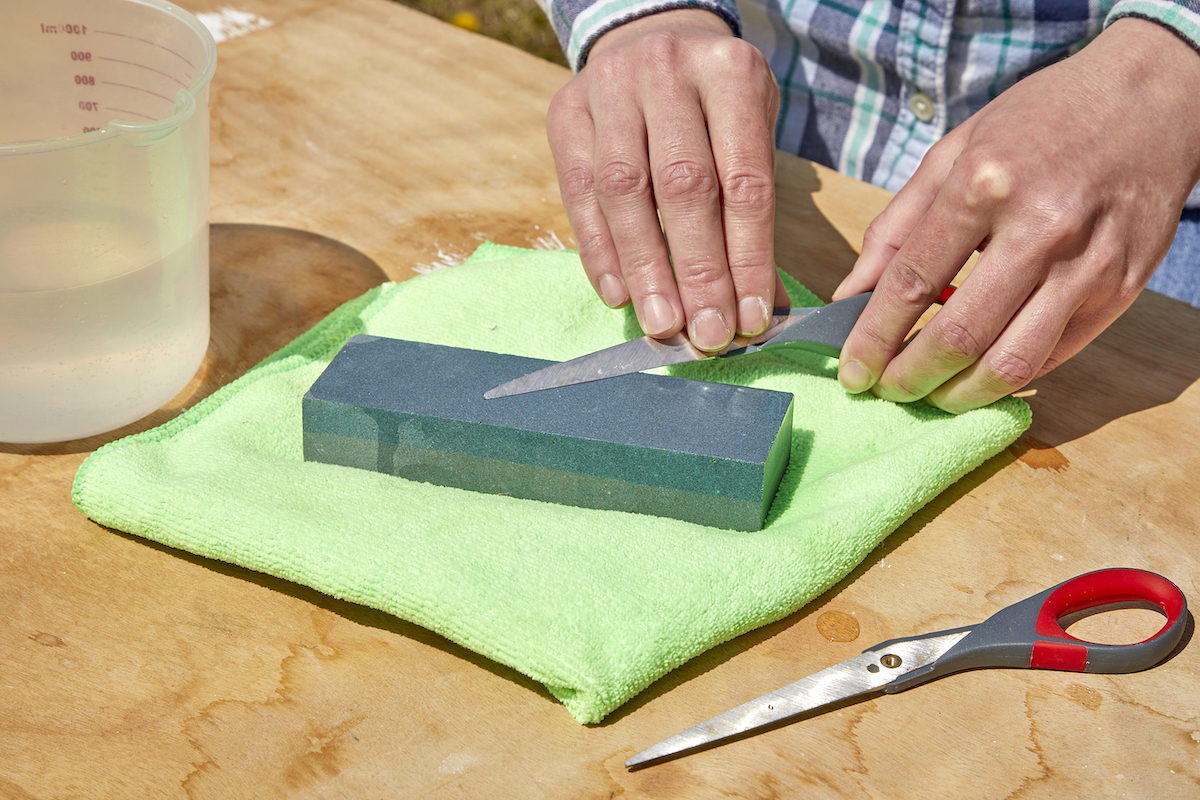

We may earn revenue from the products available on this page and participate in affiliate programs. Learn More ›
Used for cutting paper, cardboard, fabric, string, price tags, plastic packaging—that list goes on—the scissors in your office or kitchen drawer might be the most reliable everyday tool in your house. With such regular use, that trusty tool dulls over time. Most scissors are not prohibitively expensive, so when one pair dulls you may just consider buying another pair.
Learning how to sharpen scissors solves the dullness problem, and saves you the cost of buying new. Scissors are essentially two knives connected at a pivot point; as such, you can sharpen them just as you would kitchen knives, using a couple of simple tools and a little practice.
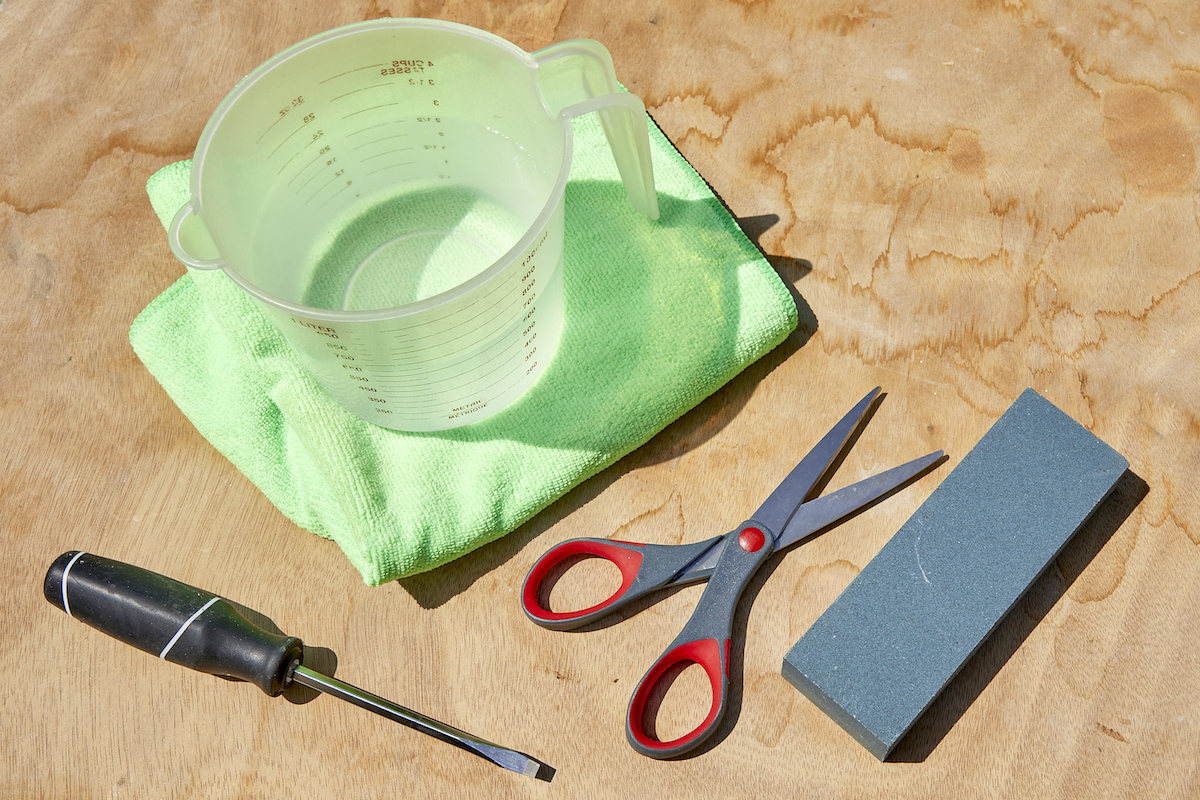
Tools & Materials
Bobvila.com may earn a commission from purchases made through these links.
Step 1: Prepare the sharpening stone.
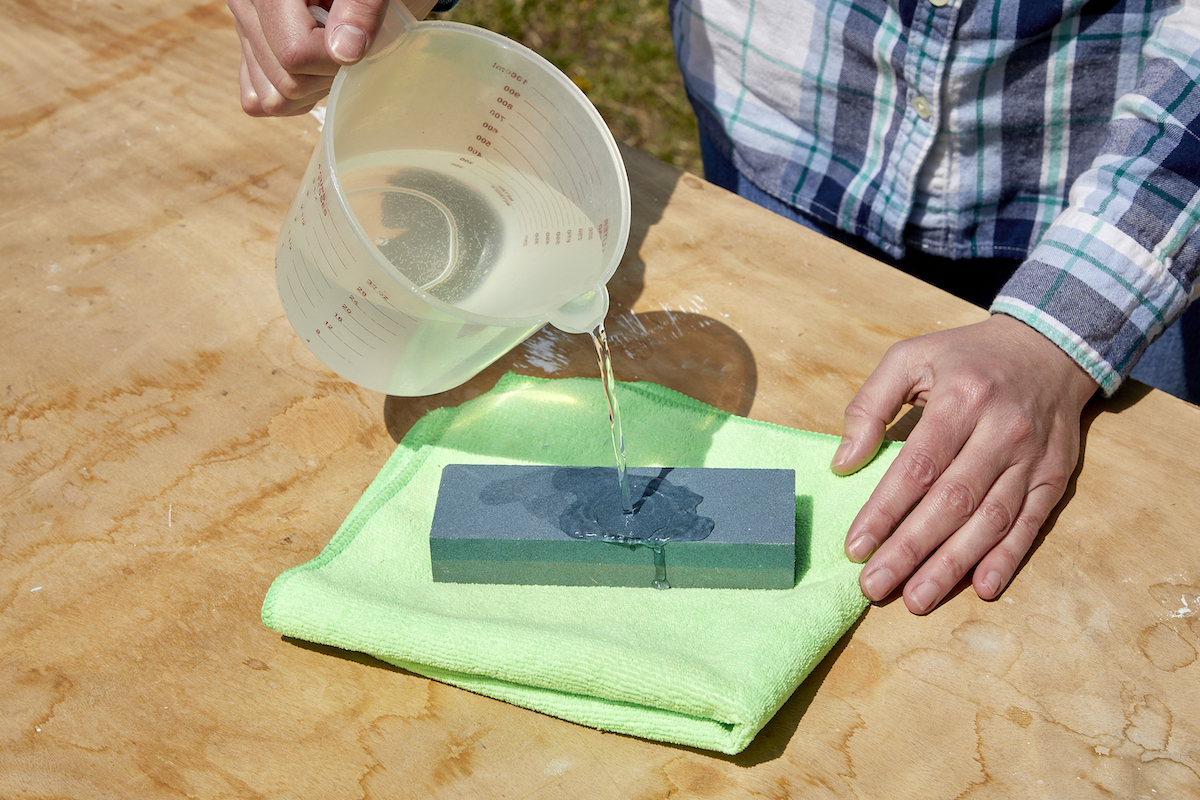
To sharpen scissors effectively, you need a sharpening stone (sometimes called a bench stone). They’re usually less than $20 at hardware stores and can be used to sharpen most any blade you have, from kitchen knives to your pruning shears. We like the Lanksy sharpening puck for its compact size and easy-to-grip shape, but you can’t go wrong with any quality two-sided stone.
If your scissors are very dull, you’ll need to start sharpening them on the coarse side of the stone, and finish with the finer side. If they just need a light sharpening, you’ll use only the finer side.
Lay your sharpening stone on a towel and lubricate it with oil or water. Stores sell honing oil alongside sharpening stones, but you can use any oil, or even water, for lubrication.
Step 2: Take the scissors apart.
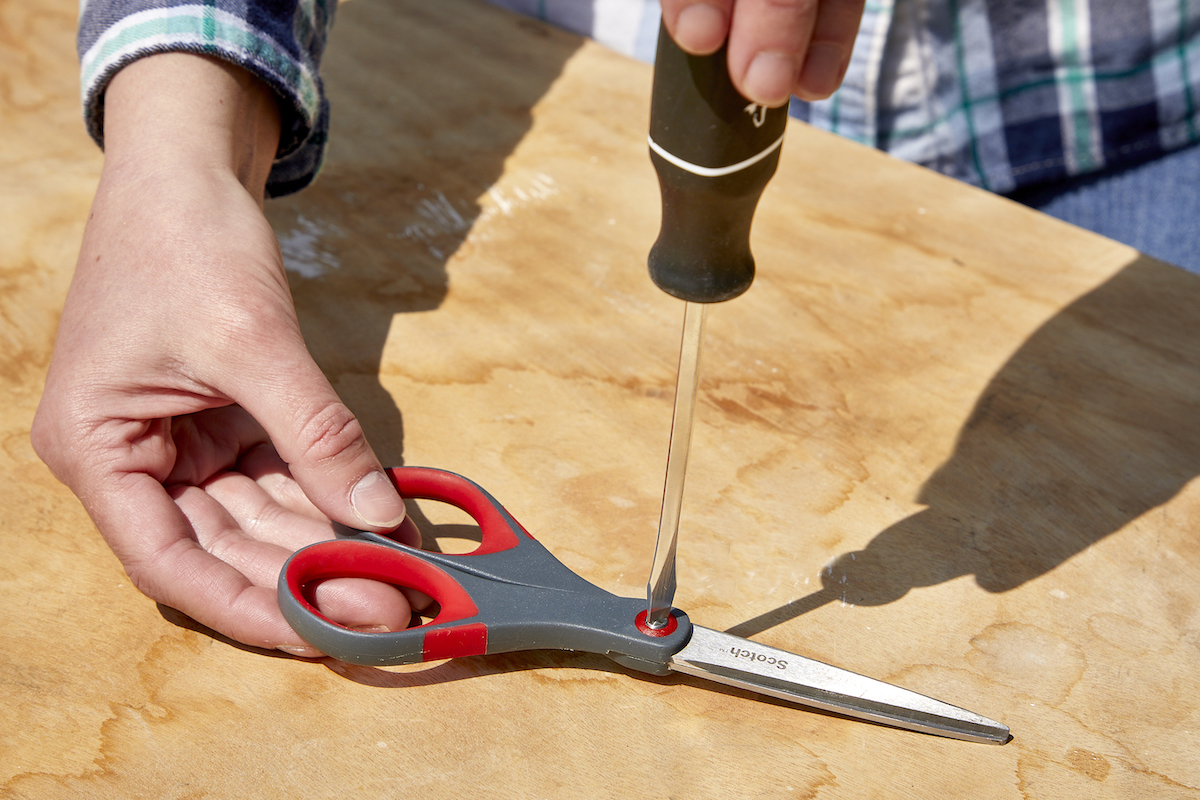
Remove the screw that holds your scissors’ blades together in order to treat each one separately. It will be much easier to work on them.

ESSENTIAL GEAR
The top pick in our researched guide to the best scissors, Amazon Basics’ scissors are built to retain their edge, so you won’t have to sharpen them as often. They can be used for cutting paper, cardboard, fabric, photo paper, and a wide variety of other materials.
These scissors come in packs of three, and have soft-grip padding on the inside of the finger holes to prevent hand fatigue.
Get the Amazon Basics Stainless Steel Scissors (3-pack) for $7.55.
Step 3: Use the stone to sharpen the first blade.
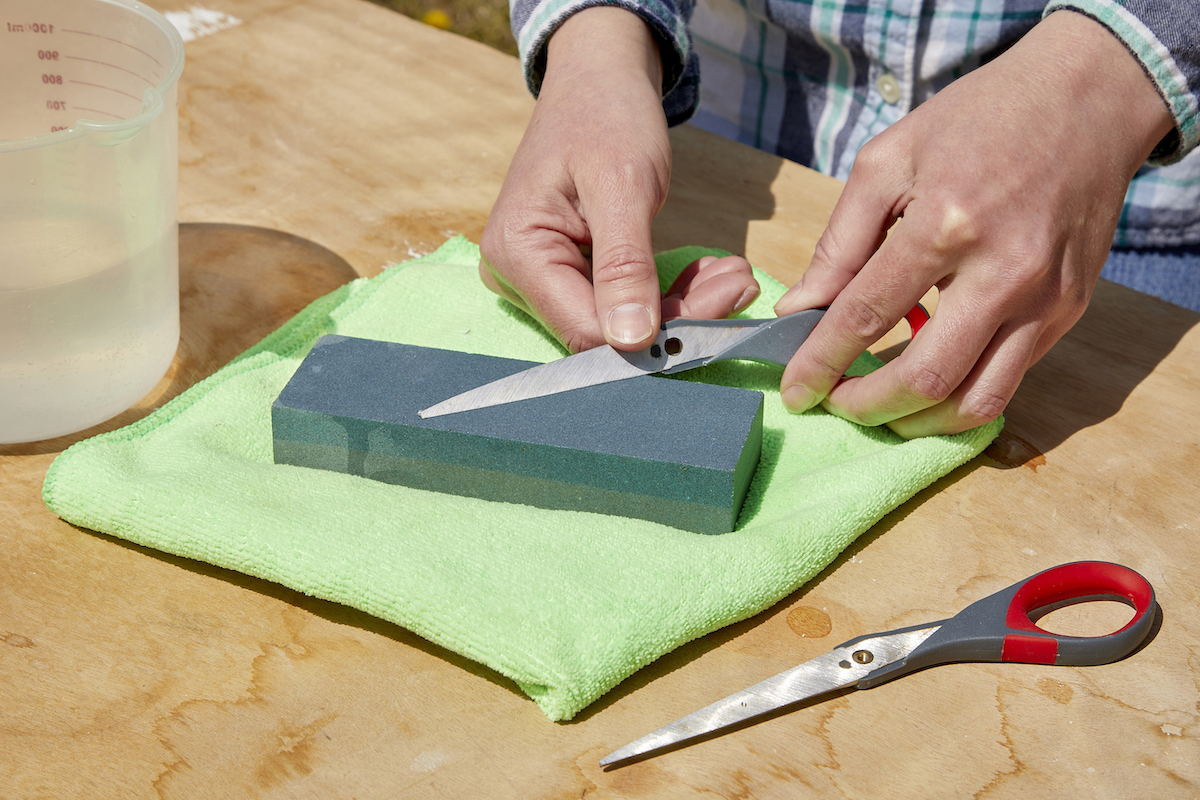
If your scissors are particularly dull, begin sharpening them on the coarse side of the stone; otherwise, start working with the finer side. Place the blade onto the stone with the beveled edge facing you. Then, gripping the scissor handle, tilt the blade toward you until the beveled edge lies flat on the stone. Now, slowly pull the blade across the stone to you, keeping that beveled edge flat against the stone. Repeat this action—carefully!—until the blade is sharp. If you started on the coarse side of the stone, finish with a few swipes on the finer side of the stone.
Until you’ve done this a few times, you may find it hard to judge when the edge has been completely sharpened. Pro tip: Before starting, run a permanent marker across the blade edge. When the marker has disappeared, you’ve sharpened the entire blade.
Step 4: Sharpen the other scissor blade.
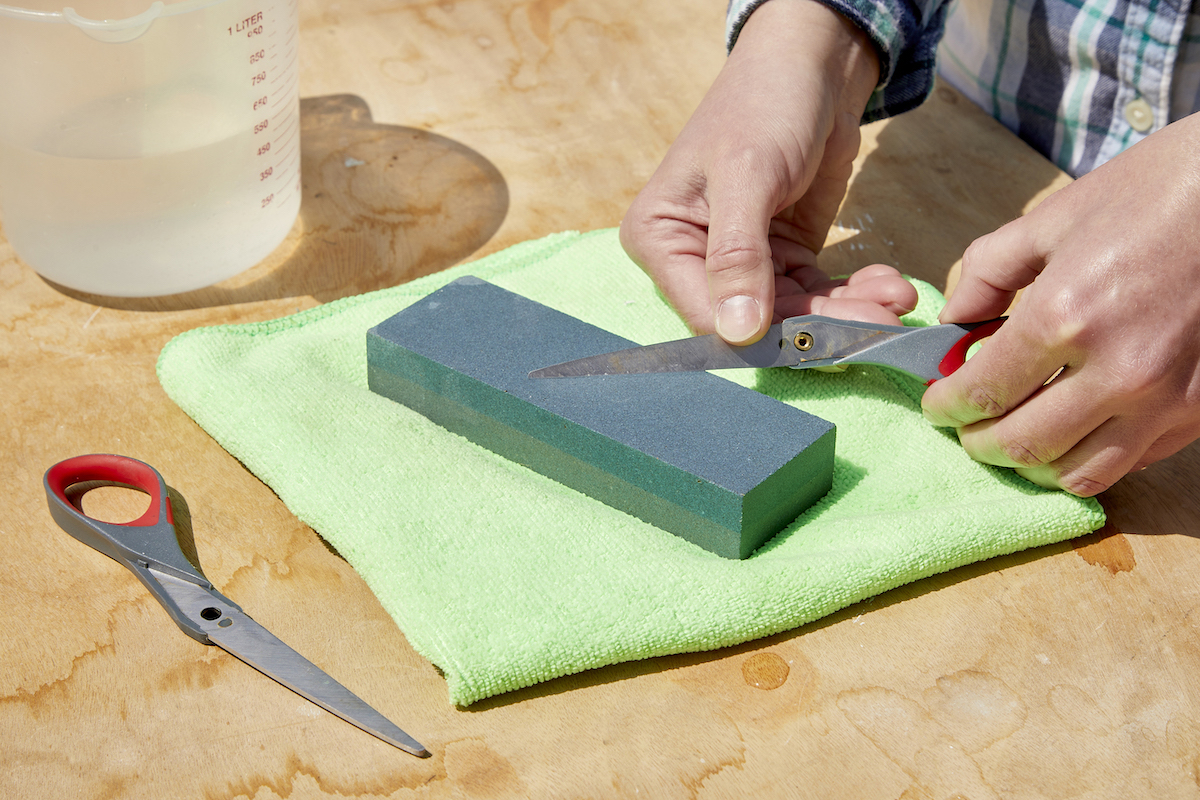
Repeat Step 3 with the second blade of the scissors.
Step 5: Put the scissors back together and remove burrs from the blades.
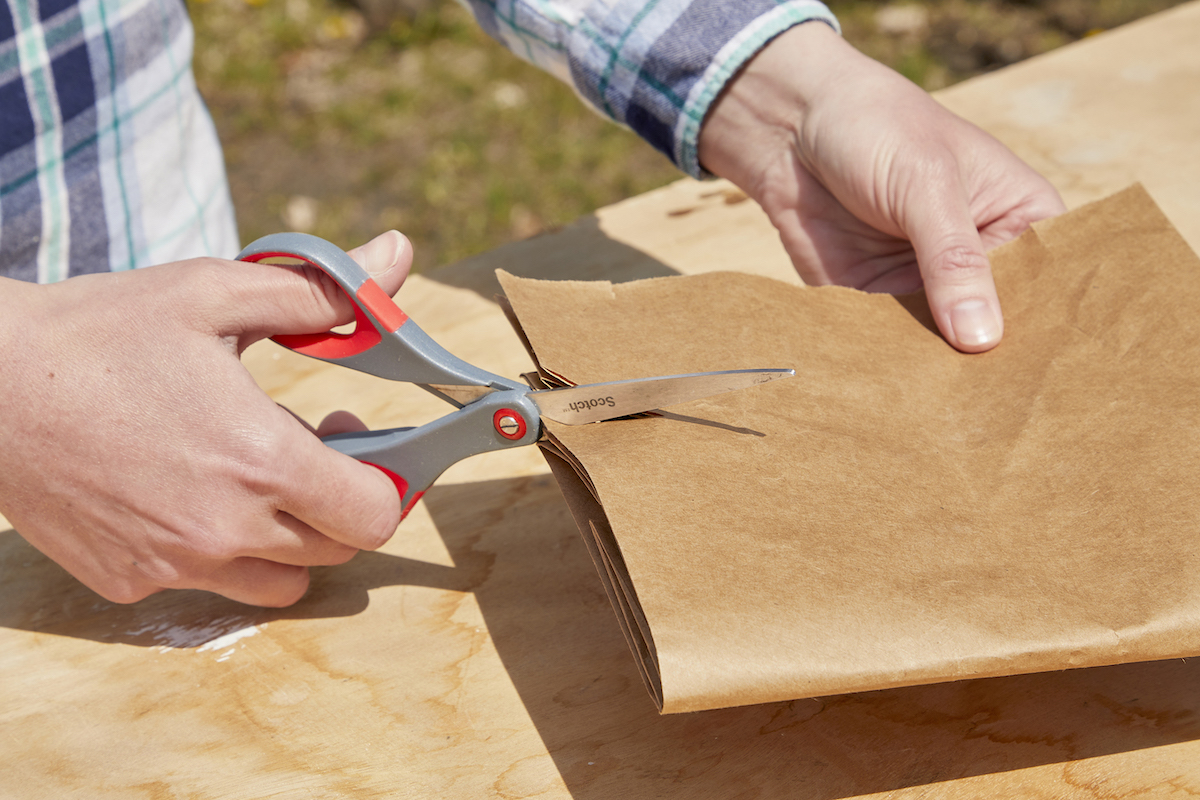
Once you’ve finished with the sharpening stone, you will see a fine edge of burrs along the blade; these need to be removed. Reassemble the scissors by screwing the blades back together, and open then shut them a few times. Knock the burrs off by making a few trial cuts through a piece of material those scissors are meant for, be it fabric or paper. If you’re happy with how sharp the scissors are, you’re finished. If not, repeat the process.
Practice your sharpening skills on some old scissors until you get the hang of it. It won’t take you long to get comfortable with the sharpening stone, and then you’ll never have dull scissors in the home again. Once you’re familiar with how to sharpen scissors, it’s really no sweat to sharpen scissors and keep them sharp with quick, regular maintenance every couple of months.
